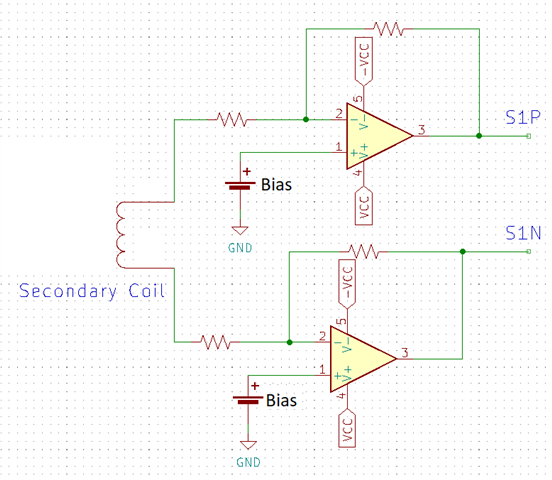Other Parts Discussed in Thread: USB2ANY
Hello,
I am designing a board featuring PGA970 to use it with an LVDT. My required Excitation signal is 3Vrms , 5kHz.I have few questions regarding IC.
1) The DAC range is stated to be 1.25V in the data sheet . is this is peak to peak voltage ? Assuming that the gain = 1 , if I take the excitation signal differentially between P1 and P2 will the signal still be 1.25V p-p or will I be able to reach 2.5V ?
Also at the amplification stage if I use 1.67V/V as gain will I get a differential signal of 2.0875 p-p between P1 and P2 or can I get 4.175V p-p ?
2) Regarding the secondary windings at 3Vrms , my LVDT produces 2.312Vrms which is 3.269V peak. Since the ADC range is 0 to 2.5V (peak to peak I think) , this means that I need to attenuate my signal externally before applying it to S1 and S2 ?
3) For the communication with the IC , I am planning to use SPI or adding the connector that matches the connector of USB2ANY in order to be able to use the GUI.
If the communication has been removed will the IC still works (produces excitation signal and produces DAC output voltage) depending on the stored code even when resetting it or does it need constant communication in order for it to keep operating?
Thank you very much in advance/
BR
Amr


